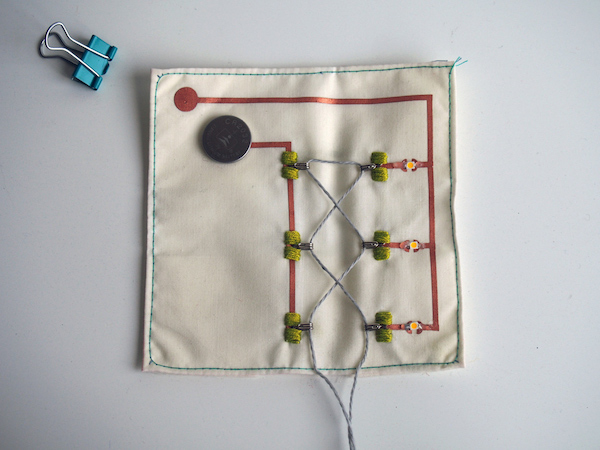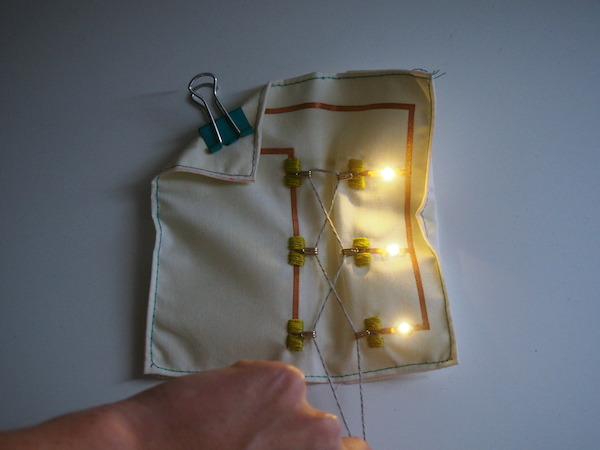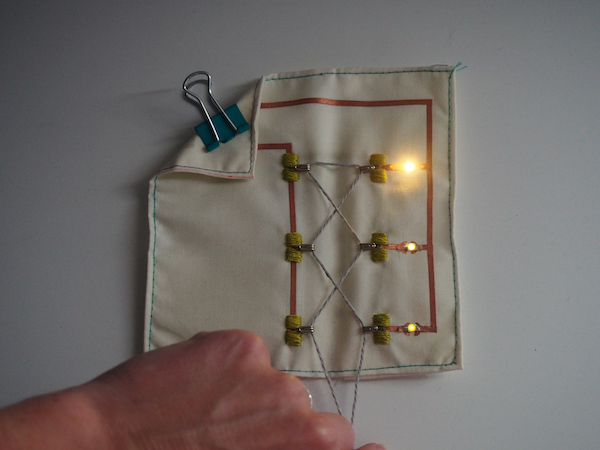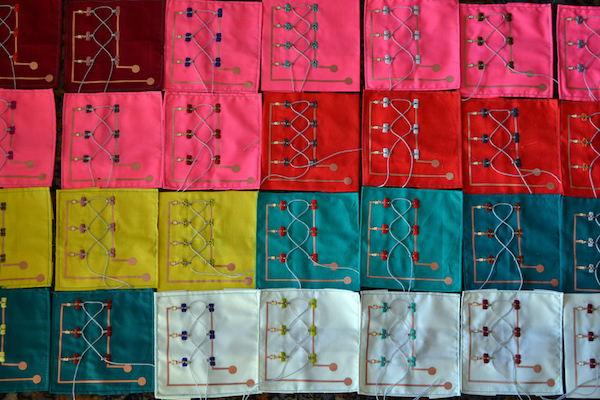Sensor Mechanics: Lacing
2015
eTextile Swatchbook Exchange, sensor, interface
This swatch uses hook-and-eye closures that can act as a sequence of switches or sensors to detect tightness. The more you pull, the brighter the LEDs become.
It is part of a series of exercises that pulls brainstorming techniques from game design into computational craft practices. I begin by looking at the mechanics of an interaction, then translating it into a sensor. More often than not in game design, you start with the interaction – the core mechanic – that will be at the center of your system. It determines how players interact with each other and how they feel about the experience as a whole. Incorporating this into my practice, it has generated more playful and whimsically functional ideas in addition to deepening my focus on the interaction.




Credits + Links
You can view the full 2015 swatchbook here.
Materials
calico, copper taffeta fabric, fusible interfacing, hook-and-eye closures, conductive thread, conductive yarn, surface mount LEDs, coin cell battery.

